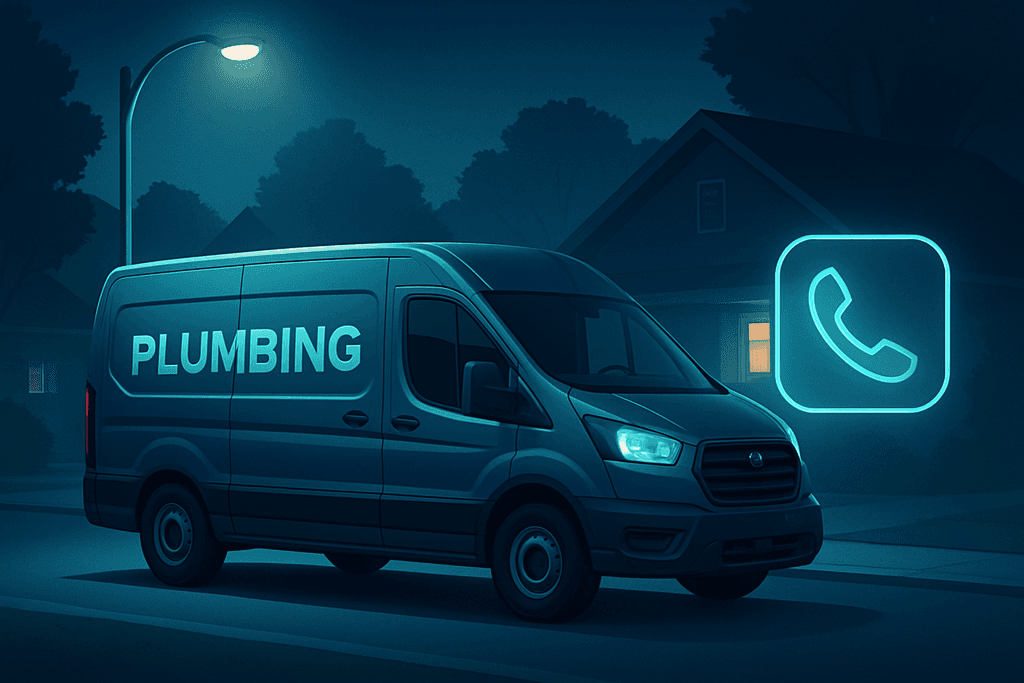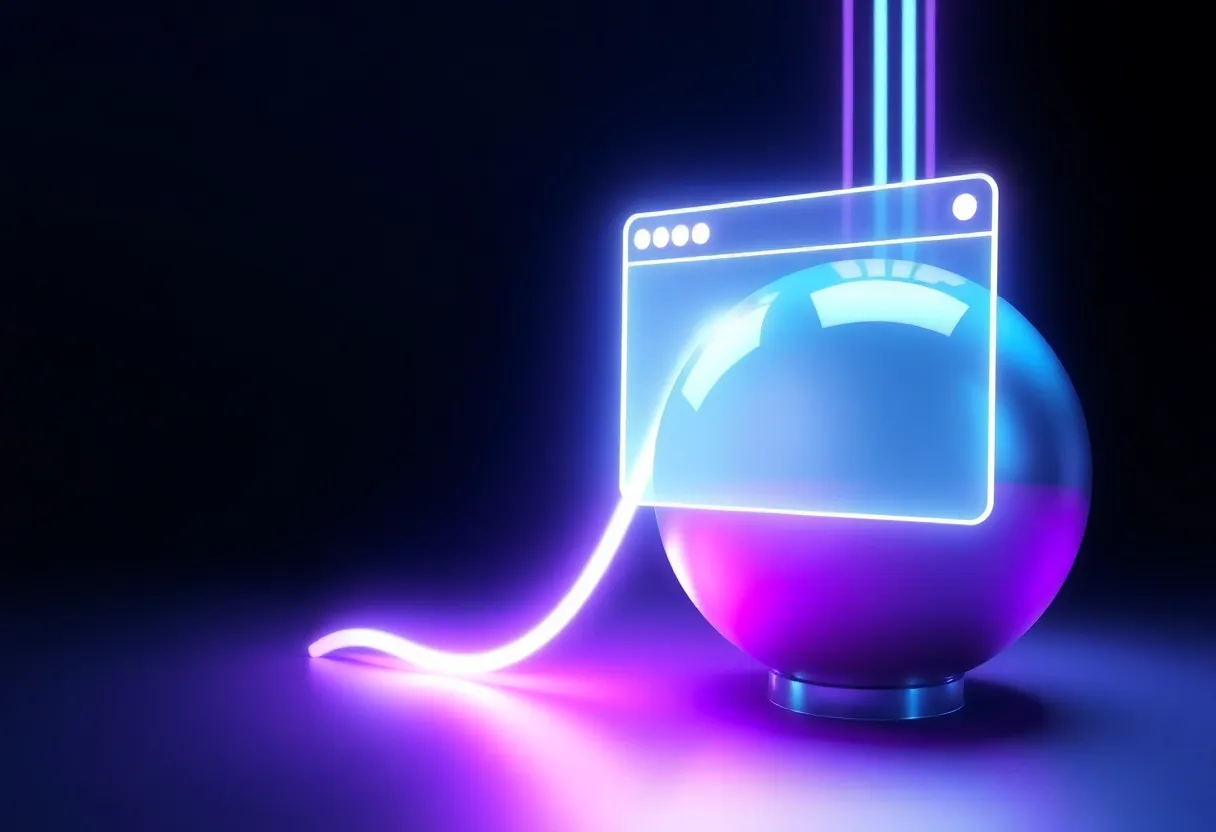A burst pipe doesn’t wait for business hours. If your phone goes to voicemail at 10:37 PM, there’s a good chance that homeowner keeps dialing until someone answers. Here’s a practical playbook for using an AI receptionist to capture more emergency calls, book jobs on the spot, and give customers calm, clear help when it matters most.
Try Small Business Chatbot’s AI receptionist
Why after‑hours calls matter for plumbers
Up to 85% of customers whose calls go unanswered will not call back, according to a 2025 benchmark report covered by Business Wire. That single stat explains why every missed after‑hours call can cost real revenue. (businesswire.com)
Plumbing emergencies are costly for homeowners and urgent by nature. Insurance industry data shows about one in 67 insured homes files a property damage claim caused by water damage or freezing each year—events often tied to burst pipes and leaks. That frequency makes immediate response a competitive advantage for local plumbers. (iii.org)
On top of that urgency, consumers increasingly expect around‑the‑clock service. Research indicates nearly half of consumers expect 24/7 support and roughly three‑quarters will switch businesses after poor experiences—so answering quickly and helpfully at night isn’t “extra,” it’s expected. (vonage.com)
What an AI receptionist does (for plumbing specifically)
Core capabilities
- Answer calls 24/7 and greet callers in a calm, friendly voice
- Triage emergencies vs. routine jobs with structured questions
- Book appointments into your calendar and confirm by text
- Collect name, address, problem details, and photos (via SMS link)
- Offer price ranges for common jobs you pre‑define
- Escalate to on‑call techs or dispatch when thresholds are met
Plumber‑friendly setup tips
- Use a local number so homeowners recognize the area code
- Write plain‑English questions: “Is water still running? Where?”
- Preload service windows (e.g., “tonight 9–11 PM” or “tomorrow 7–9 AM”)
- Route true emergencies to an on‑call mobile in parallel
- Send prep instructions automatically (shutoff valve, power, safety)
If you want a fast start without code, Small Business Chatbot offers an AI voice receptionist with 24/7 call coverage, booking by text, and integrations with forms, CRMs, and calendars—built for small teams. See customer reviews to learn how other operators use it.
What customers expect on the phone in 2025
- Human‑like voice AI for complex issues. Roughly half of consumers have engaged with Voice AI, and leaders see it as the next evolution in service. Many will switch after even one bad experience, so tone and empathy matter. (Zendesk, 2025). (zendesk.com)
- Personalized help. A majority expects interactions to feel tailored to them—use the caller’s name, reference the neighborhood, and remember prior jobs. (Zendesk, 2025). (zendesk.com)
- Phone still matters—especially in urgent situations. Nearly 8 in 10 consumers consider the phone channel important, yet many won’t answer unknown numbers—so display a local, trusted number. (TransUnion, 2024). (newsroom.transunion.com)
Quick setup: from zero to first booking
- Test three scenarios: active leak, clogged drain, routine quote
- Verify SMS confirmations include ETA, license #, and what to prep
- Turn on transcripts and email summaries for morning review
- Measure baseline: nightly call volume, answer rate, bookings
- Review week 1 transcripts and tighten questions/routing
Prefer a guided setup? Check out integrations to connect your forms/CRM/calendar in a few clicks.
Call playbooks that win emergencies
1) Active leak triage (2–3 minutes)
- Confirm safety: “Is water still running? Can you reach the main shutoff?”
- Locate issue: kitchen/bathroom/basement; fixture; hot vs. cold
- Collect address, access notes, photos via SMS link
- Offer the fastest slot: “We have a technician 9–11 PM or 7–9 AM. Which works?”
- Send confirmation + prep steps automatically
2) No hot water (water heater)
- Ask age/model, tank vs. tankless, pilot light status
- Offer diagnostic fee and typical range (you set this)
- Book earliest slot; include “clear path to unit” in prep text
3) Routine quote after hours
- Qualify (property type, timeline, budget range)
- Offer next‑day phone consult and capture best callback time
- Email transcript to office so sales starts with context
ROI math: estimate your upside
Use this quick model to size impact. Adjust the numbers to match your market.
Nightly calls (avg).............. 6 Missed without coverage.......... 2 Jobs you’d win with 24/7 answer.. 1.2 (60% of missed) Average ticket................... $325 Monthly extra revenue............ 1.2 × $325 × 30 = $11,700 Less AI receptionist cost........ (your plan) Net monthly gain................. revenue minus plan
This doesn’t include downstream work (repairs after mitigation, replacements, maintenance plans) or time saved on next‑day callbacks.
Build trust: identity, local numbers, privacy
- Use a local caller ID. Many consumers block unknown numbers, yet still value phone calls for urgent issues—another reason to pick a local area code and clearly identify your business. (TransUnion, 2024). (newsroom.transunion.com)
- Be empathetic and clear. With more customers engaging voice AI, human‑sounding tone and transparent handoffs keep satisfaction high. (Zendesk, 2025). (zendesk.com)
- Document everything. Nightly transcripts create clean job records for insurance conversations about water‑damage incidents—claims that are common in U.S. homes. (Insurance Information Institute). (iii.org)
Frequently asked questions for plumbing businesses
1) Will an AI receptionist replace my dispatcher?
No. Think of it as a first‑line receptionist: it answers immediately, gathers details, books into your calendar, and alerts on‑call staff for true emergencies. Complex estimates and dispatch decisions still benefit from a human.
2) Can it handle real emergencies at night?
Yes—if you define emergency triggers and an escalation path. For example, set active_leak = true to simultaneously book the earliest slot and ring your on‑call number. It will also text shutoff instructions and request photos.
3) What about customer experience—will people accept AI?
Surveys show growing comfort with voice AI when it solves problems quickly and feels human. The key is giving callers a fast path to a person when needed. (Zendesk, 2025; Vonage, 2024). (zendesk.com)
4) How do I measure success?
Track: nightly call volume, answer rate, booking rate, emergency vs. routine mix, time‑to‑appointment, and next‑day callbacks. Compare weeks before/after launch and review transcripts to tighten scripts.
5) Can it integrate with my CRM and calendar?
Yes. Solutions like Small Business Chatbot integrations connect forms, CRMs, and calendars so booked jobs and contact data flow into your systems automatically.
6) How does this reduce risk for homeowners?
Fast response helps minimize damage. Water damage and freezing lead to frequent claims; being available after hours can prevent escalation and improve outcomes for customers. (Insurance Information Institute). (iii.org)
7) What if a caller doesn’t answer unknown numbers?
Use a local number and include your business name in the voicemail and first text. Many consumers block unknown calls, but they do value phone communication—especially in urgent scenarios. (TransUnion, 2024). (newsroom.transunion.com)
Putting it all together
Answering instantly, triaging calmly, and booking decisively—those three actions convert late‑night stress into tomorrow’s revenue. If you want a ready‑to‑use option built for small teams, Small Business Chatbot delivers a 24/7 AI receptionist with local numbers, fast voice, booking by text, and simple integrations—so you wake up to organized jobs instead of voicemail roulette.
Sources referenced: Zendesk Customer Experience Trends 2025; Business Wire coverage of 2025 call tracking benchmark report; Insurance Information Institute homeowners claims facts; TransUnion consumer phone channel research; Vonage global consumer preferences study. (zendesk.com)



